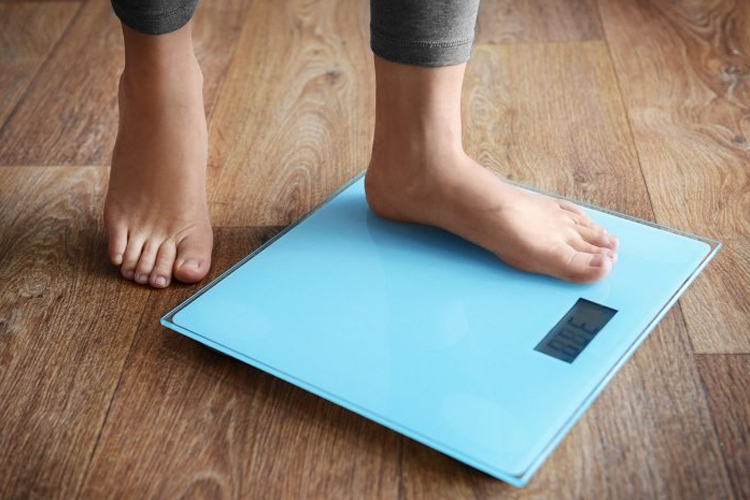Your evening walks might help you reach your step goals, but that doesn’t mean you’re necessarily getting a good workout. For walking to lead to health benefits like decreased risk of heart disease, stronger bones, weight loss, improved sleep and a mood boost, you have to do more than put one foot in front of the other.
If you’re not sure whether your walks meet the criteria for an actual workout, here are five signs your walking routine might be too easy:
1. YOU DON’T BREAK A SWEAT
It’s a good sign when there are beads of sweat on your forehead, and your clothes feel a little damp after a walk. “A gentle stroll, is, quite literally, no sweat for your body,” says Jonathan Ross, spokesperson for the American Council on Exercise and author of “Abs Revealed.”
Increasing the intensity of your walks activates your sweat glands; the more intense the workout, the more likely you are to break a sweat. But sweating is not the only indicator of a good workout, according to Ross.
Your goal should be to break a sweat while hitting your target heart rate, the “aerobic zone” that indicates you’re getting a cardiovascular workout. An ideal target heart rate is at least 60% of your maximum heart rate — and that number depends on your age.
To calculate your maximum heart rate, subtract your age from 220. For example, a 30-year-old would have a maximum heart rate of 190; 60% of 190 is 114 — this is your target beats per minute, which can be checked by putting your finger on the pulse in your neck, or wearing a heart rate monitor.
Aim to spent at least 30 minutes in this target zone. When you do, you’ll surely break a sweat.
2. YOU’RE NOT HITTING WEEKLY EXERCISE TARGETS
The Centers for Disease Control and Prevention guidelines advocate for at least 150 minutes of moderate-intensity physical activity per week. You’ll hit the recommended number of minutes by taking a slow stroll around the block for 30 minutes five evenings per week but you might not get the intensity to be considered adequate physical activity.
If sustaining a moderate-intensity pace for 30 minutes seems daunting, Erin Oprea, USANA Fitness Ambassador and celebrity personal trainer, suggests breaking it up into shorter spurts. Brisk 10-minute walks before work, during lunch and in the evening still count toward your weekly exercise goals. “If you’re busy, getting multiple brisk walks in every day should be on your to do list to get your steps in,” Oprea says.
3. YOU CAN CARRY ON A CONVERSATION
If you’re able to chatter endlessly about the latest episode of “Game of Thrones” without huffing and puffing, you need to pick up the pace. “If we are speaking at normal conversational speed, it’s unlikely that we are working out at a sufficient intensity to deliver a challenge to the body,” Ross explains. “As our intensity goes up, we should notice that we’re able to say fewer and fewer words between breaths.”
It’s OK to talk to your walking partner (or sing along with your workout playlist) but the effort should require you to stop between sentences to catch your breath. “The sweet spot for most people is about 3–6 words spoken before taking a breath,” says Ross.
4. YOUR MUSCLES NEVER ACHE
Walking is a great low-impact exercise but that doesn’t mean it shouldn’t feel like a workout. A lack of muscle aches is a strong sign you’re not pushing yourself hard enough. Your goal is a light muscle ache. If you’re too sore to move the next day, you’ve overdone it and should scale back the intensity on your next walk.
You don’t have to give up walking for running or another workout. Picking up the pace, increasing the distance or changing the terrain can all help fire up your muscles and increase the calorie burn. “Find some hills and sweat a little,” says Oprea.
5. YOU FOLLOW THE SAME ROUTE
It’s easy to find a route you like and stick to it. Over time, your body gets used to a certain pace and terrain; the more you follow the same route, the easier it gets. “Even turning down a few different streets while otherwise following the exact same route is enough to do the trick,” says Ross.
There is no such thing as a “bad” walk. When your goal is walking for exercise and health benefits, it’s essential to make sure your walking routine isn’t too easy — and if it is, challenge yourself to amp it up.
Written by My Fitness Pal
Summer is coming, which means your getaway is dead ahead. Yes, vacation means rest and relaxation — but it doesn’t have to mean derailing your normal nutrition and exercise pattern. The last thing you want is to gain back all the weight you worked so hard to lose before your indulgent vacation.
With a little creativity and proactive planning, you can take a holiday that actually pushes you toward your health and fitness goals, while also giving you a much-needed break from reality. Check out these tips for planning a healthy getaway that helps — not hurts — your weight loss.
Is that a conversation you need to have with your scale? That little machine that often feels like it’s judging you can be your best friend in gauging your progress when you’re trying to lose weight. But guess what: Not only is it not the end-all, be-all for weight loss, it might be working against you. Is it time to break up with your scale? Here are five signs you might need to think about alternate ways to track your weight loss.
1. YOU’RE REACTING TOO EMOTIONALLY TO WHAT YOU SEE
If the number on the scale is making you change your behavior in the immediate term, it’s a sign something isn’t working. In my dietitian practice, I’ve seen clients who react to their weigh-ins by over-restricting what they eat if they’ve gained weight, or overindulging if they’ve lost weight. I call this “yo-yo weight gain,” and it can lead to an overly drastic approach to dieting. Having your eating habits dictated by your scale makes it nearly impossible to be mindful of your food choices. Self-sabotage is a slippery slope, and you need to take a hard look at the habits that make you go to the extremes — otherwise it’s it hard to keep the weight off for good.
2. YOU’RE EXPERIENCING DISORDERED EATING BEHAVIORS
Bingeing, purging, restriction, orthorexia or over-exercise: Irregular eating takes many forms, but if you fall into any of these categories, it’s time to step away from the scale and talk to a professional who can help you find a healthier way to live. If you’re concerned about yourself or a loved one, the National Eating Disorders Association has a good screening tool that can help advise whether you need to talk to a pro. We can all live a healthy life in this weight-conscious world, but building a foundation that involves a plan of action for recovery from disordered eating behaviors is the first order of business.
3. YOU HAVE NEGATIVE THOUGHTS ABOUT YOURSELF
Shame gets real deep, real fast. Self-loathing and blaming yourself for your weight affects more than just your progress — it also erodes your feeling of self-worth and your dignity. Shame isn’t a motivator. If stepping onto the scale makes you have negative thoughts about yourself, it’s a sign you need to ditch it. The number on it doesn’t say anything about your worth or value — it’s just a number, literally.
4. YOU’RE WEIGHING YOURSELF TOO MUCH
If you’ve become obsessive about weighing in first thing in the morning or multiple times per day, that’s a sign the scale’s not doing you any good. Instead of tracking weight, take measurements. Often with healthy eating and exercise, your waistline will shrink even if your weight doesn’t move much. In fact, waist circumference may be a better predictor of health than weight.
5. YOU’RE BUILDING MUSCLE, AND THAT’S MAKING YOU GAIN WEIGHT
If you’re training hard but measuring results by the number you see on the scale — which is in turn making you unhappy — maybe it’s time to reevaluate your metric for success. Strength training and HIIT workouts can boost muscle mass, which means your body composition may be improving. But because the number on the scale is a sum of your whole body — including fat and fat-free mass such as muscle, bones, organs, ligaments, tendons and water — your total body weight doesn’t necessarily provide the full picture. Endurance training can create weight fluctuations as well, thanks to fluid retention and inflammation. If this sounds like you, you might want to focus on your training and pay more attention to how you feel, hitting performance goals, how your clothes fit and eating foods that fuel you.
Written by My Fitness Pal
If you’re looking for a workout plan that can help you lose weight, adding more sweat sessions to your weekly routine is a great place to start. And there are endless ways to do it, too—maybe you’ll unexpectedly fall in love with running, or you’ll find that group fitness is seriously motivating for you. But sticking to one favorite or randomly jumping from one workout to the next isn’t the most efficient or effective way to get fit or lose weight (those may or may not be the same thing for you, which is cool!). If you want to see (and maintain) results, you have to have a plan of action. Whether you’re totally new to fitness or just need some guidance, you’re covered here. Celeb trainer Adam Rosante, author of The 30-Second Body and C9 ambassador, came up with a plan for SELF readers to help guide you to success with any weight-loss goals you may have. It combines ultra-efficient workouts for weight loss along with space for you to incorporate workouts you really love, too.
But first, a few things to note. As great as working out is, for sustainable weight loss, it needs to be combined with healthy nutrition choices and good sleep. And to take an even larger step back, always remember that healthy eating, fitness, and weight loss vary from person to person. What works for your best friend won’t always be the best thing for you, just as your methods might not work for them. And if you’re specifically trying to lose weight, ask yourself why. Will losing weight (and how you go about it) actually make you healthier and happier? And are there other questions you should consider before you try? For example, if you have a history of disordered eating, it’s always smart to discuss potential eating changes with your doctor before embarking on a new plan. Even if you have no history of disordered eating, be sure to set reasonable expectations and goals for yourself. Health and weight loss involve so many components, like the aforementioned healthy eating and sleep, plus things you can’t control at all, like hormonal fluctuations. Above all, no matter what your goals are, it’s most important to treat yourself with kindness and listen to your body.
That’s one of the best things about this plan, actually: “This plan is highly effective, but totally accessible to all levels,” says Rosante. Here, he outlines a sample Monday through Sunday workout plan that, over time, can help you lose weight—all you have to do is keep showing up and working hard. This mix covers all of your bases, but if you need to swap something out, that’s NBD—this is just an example week of the types of workouts you can be doing. Consider it a baseline to help get you going.
Here’s how to use this weight-loss workout plan:
- Check out the perfectly planned week of workouts tailored to weight-loss goals below (and save the pin at the bottom for easy reference, too). If you’re not trying to lose weight, that’s completely fine too—no matter what your goals are, this balanced fitness plan can be a great guideline.
- Schedule your workouts for the upcoming week on your calendar and book your classes in advance.
- If you need to replace a day with another workout, just be strategic about it. “Follow the spirit of each workout: Strength training, high-intensity cardio, mobility work and stretching, steady-state movement.” Maybe you swap out a sprint day with an interval training group fitness class, or you hit up a restorative yoga class on rest day.
- Remember that safe, healthy weight loss is a gradual process!
Now go get ’em.
MONDAY: TOTAL-BODY STRENGTH TRAINING
“Strength training is the key to weight loss and unlocking your inner badass,” says Rosante. “You’ll burn fat, shape your body, and increase the number of calories your body burns at rest.”
This is because the more lean muscle your body has, the more energy it takes to maintain. This increases your BMR, or basal metabolic rate, meaning your body burns more calories at rest. This is a calculation of how many calories you’d burn if you just laid in bed all day.
Rosante’s simple strength workout requires some floor space, a workout bench, and a set of dumbbells. The exact weight you use will vary, he says, but he does have some guidelines for choosing the right ones. “You want to be able to complete all of the reps without stopping, while keeping great form,” he says. “But your last few reps should feel very difficult to complete. You should feel like you could maybe do one or two more reps if you had to.” It may take some trial and error, and it’s better to start lighter when you’re just beginning. (Here are some more tips on choosing the right weight.)
Ready to get started? Here’s the total-body strength workout you’ll do three times a week:
1. Bodyweight Squats—15 reps. Quick tip: Get low, keep your chest up, and don’t let your knees go over your toes during this lower-body move.
2. Dumbbell Bench Press—12 reps. Quick tip: Position yourself so your head, back, and butt are all on the bench, your feet flat on the floor.
3. Dumbbell Row—12 reps each side. Quick tip: If you don’t have a bench available, try a bent-over row.
4. Lying Isometric Y—Hold for 30 seconds. Quick tip: You can keep your legs on the ground for this one if that feels more comfortable.
5. Box Step-Ups—15 reps each leg. Quick tip: Alternate between your left and right leg, and for an extra challenge, step your lifted foot into a lunge as you come down from the box.
6. Plank—Hold for 30 seconds. Quick tip: Make sure you’re keeping your core tight!
Do the circuit 3x, resting for 1 minute between each round.
TUESDAY: SPRINT INTERVALS
Strength training is important for increasing your BMR, but the calorie burn payoff for high-intensity cardio workouts is more immediate. “Sprinting torches calories and gets the work done in a fraction of the time you’d spend jogging,” explains Rosante. This type of high-intensity interval training is especially effective because after skyrocketing your heart rate several times during a workout, your body uses more energy to get your body back to a resting state.
You can do Rosante’s simple (but tough as hell) sprint interval workout on almost any cardio equipment. So no worries if you just can’t with the treadmill sometimes—you can also use an indoor cycling bike, rowing machine, elliptical, you name it.
- 30 seconds: Full-out sprint
- 60 seconds: Moderate pace jog
- Do this 12x
WEDNESDAY: FOAM ROLLING + 12,000 STEPS
“Your body needs to recover after two days of intensity, but you don’t want to sit around doing nothing,” explains Rosante. “Foam rolling and stretching will improve your mobility and actually help to improve the quality of your workouts, [because] good mobility will allow you to achieve full range of motion in the moves. Executing these moves with a greater range of motion will force your body to exert more energy, and the more energy you exert, the more calories you burn.” A bigger range of motion means you’ll be able to squat deeper and lunge lower while using proper form. When the right muscle fibers are firing, you’ll get more out of every exercise.
Now pair that mobility work with some walking. Walking is a low-impact movement that increases blood flow and will help speed recovery, Rosante explains. “Plus, the simple science of weight loss is this: Expend more energy than you intake. Walking counts!” So break out the activity tracker or down load an app on your phone around and aim to get a solid 12,000 steps in (a little more than the normally cited 10,000 steps). “If the goal is weight loss, an extra 2,000 steps per day helps you kick things up,” says Rosante.
THURSDAY: TOTAL-BODY STRENGTH TRAINING
Do the same workout you did on Monday.
FRIDAY: HIGH-INTENSITY GROUP FITNESS CLASS
“Do a high-intensity fitness class to kick up the calorie burn while keeping things fresh, interesting, and social,” says Rosante. Grab some friends and head to an indoor cycling studio, or sign up for the boot camp class you’ve been nervous to try. Having a strategic program like Rosante’s is important for efficiently moving toward your goals, but this where you have the chance to mix it up so you don’t get bored. No matter what you do, though, make sure you sweat—and have fun.
SATURDAY: TOTAL-BODY STRENGTH TRAINING
Do the same workout you did on Monday and Thursday.
SUNDAY: REST DAY
Ah, rest day—you’ve earned it. Muscles aren’t built while you’re working them—in fact, when you strength train, you’re breaking down muscle fibers. That’s why it’s important to build in rest and recovery time, so they have a chance to repair themselves a little stronger than before, explains Rosante.
“You’ve worked your ass off this past week,” says Rosante. “Rest up and get ready to crush it again next week.”
STICK WITH THIS PLAN FOR ABOUT FOUR WEEKS, THEN MIX IT UP
Keep it up with this workout plan for three to four weeks, suggests Rosante. “Improve and progress with each workout, each week. Lift a little heavier. Push a little harder.” Even if you just focus on improving your form during every workout, that’s still progress, says Rosante.
After a month or so on this plan, it’ll be time to switch it up. “You don’t want to stay on it forever for a couple of reasons. First, you’d get bored out of your mind. And that’s a fitness killer right there,” says Rosante. “Second, your body is absolutely brilliant at adapting to stress. Eventually, it will find a way to make easy work of these sessions. When that happens, you’ll plateau and stop seeing progress. Change is essential.”
But hopefully, once you’ve been crushing your workouts for several weeks, you’ll feel more comfortable than ever moving forward in your fitness journey. And that alone is a big win, no matter what the scale says.
Written by My Fitness Pal




